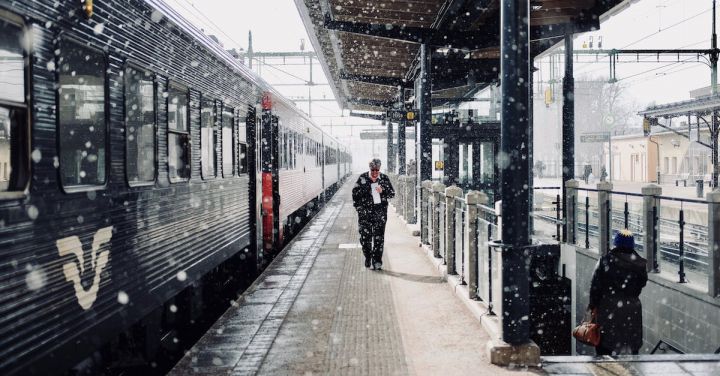Stretching over 9,000 kilometers, the Trans-Siberian Railway is an engineering marvel that connects Moscow, the capital of Russia, to Vladivostok, a major port city on the Pacific Ocean. It is not just a railway; it is a lifeline for the vast continent of Asia.
The construction of the Trans-Siberian Railway began in 1891 and took over a decade to complete. The railway was built to connect the remote regions of Siberia to the rest of Russia, and it has since become one of the most important transportation routes in the world.
The Trans-Siberian Railway is not just a means of transportation; it is a journey through history and breathtaking landscapes. As the train chugs along, it passes through diverse terrains, from the snowy plains of Siberia to the lush forests of the Ural Mountains. It is an opportunity to witness the grandeur of nature up close.
One of the highlights of the Trans-Siberian Railway is Lake Baikal, the deepest and oldest freshwater lake in the world. The train skirts along its shores, offering passengers stunning views of the crystal-clear waters and surrounding mountains. It is a sight that leaves travelers in awe of the beauty of the natural world.
But the Trans-Siberian Railway is not just about the scenery; it is about the people and cultures that exist along its route. The train is a melting pot of languages, traditions, and stories. Passengers have the chance to interact with locals and learn about their way of life. From the bustling cities of Moscow and Irkutsk to the remote villages of Siberia, the Trans-Siberian Railway connects people from all walks of life.
For many, the Trans-Siberian Railway is an adventure of a lifetime. It offers the opportunity to explore the vastness of Asia at a leisurely pace. Passengers can choose to hop off the train at various stops along the way and explore the cities and towns they encounter. From the opulent palaces of Moscow to the Buddhist temples of Ulan-Ude, there is something for everyone to discover.
The Trans-Siberian Railway is not just a passenger train; it is also a vital link for the transportation of goods. It serves as a lifeline for the economies of the regions it connects. From coal and oil to timber and minerals, the railway facilitates the movement of resources across vast distances. Without the Trans-Siberian Railway, many remote regions would be isolated and cut off from economic opportunities.
In recent years, the Trans-Siberian Railway has also become a popular tourist attraction. Travelers from around the world embark on this epic journey to experience the beauty and diversity of Asia. It is a chance to step out of one’s comfort zone and embrace new cultures and experiences.
The Trans-Siberian Railway is not just a railway; it is a lifeline for Asia. It connects people, cultures, and economies across a vast continent. It is a journey through history, nature, and human connection. Whether you are a traveler seeking adventure or a local relying on its transportation services, the Trans-Siberian Railway holds a special place in the hearts of all who encounter it.
